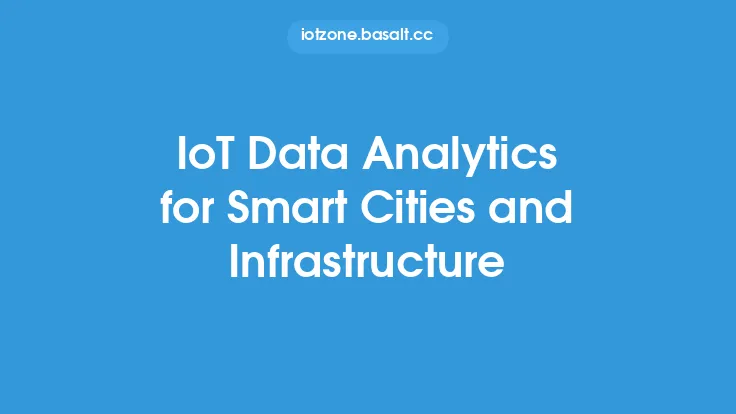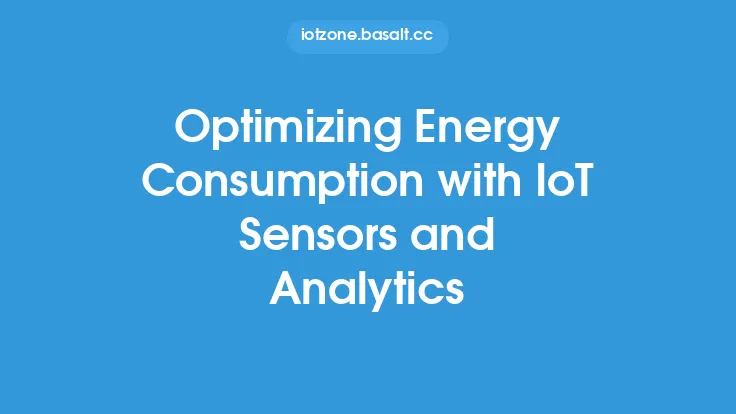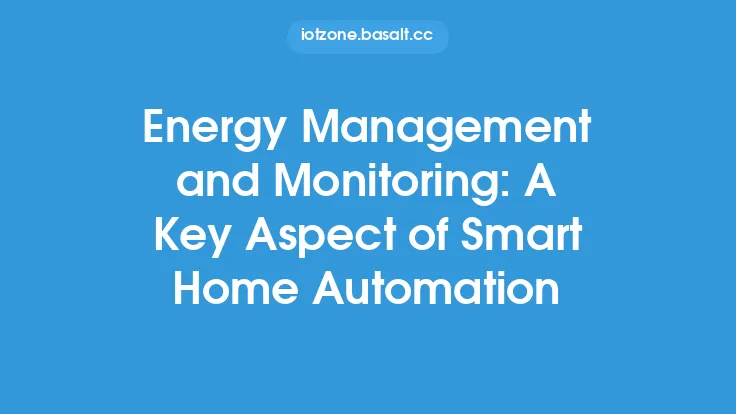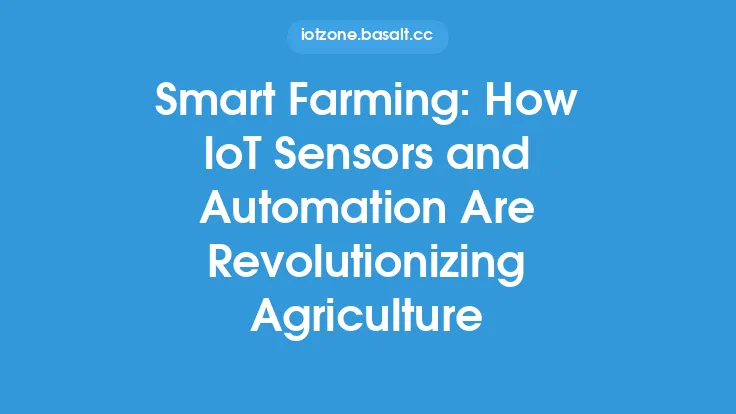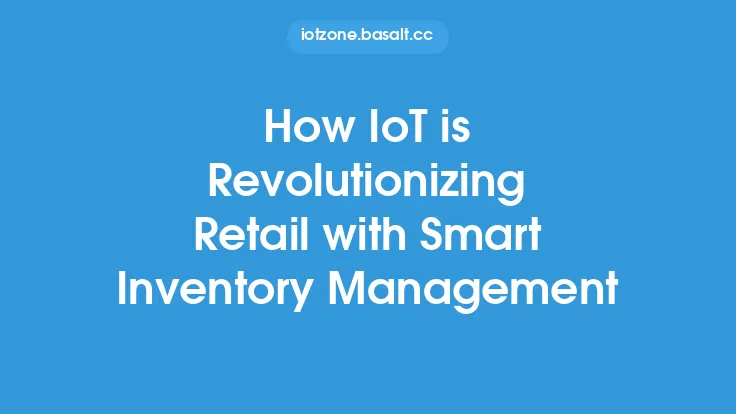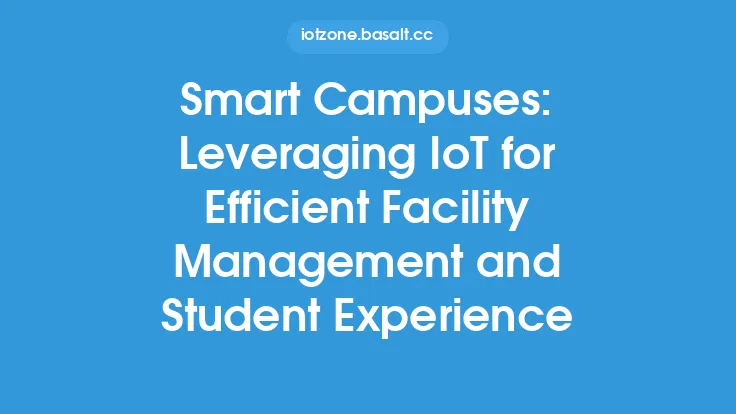The increasing population and urbanization have led to a significant rise in the number of vehicles on the road, resulting in traffic congestion, pollution, and decreased quality of life. Traditional traffic management systems, which rely on manual monitoring and static traffic signals, are no longer effective in managing the complex traffic patterns of modern cities. This is where the Internet of Things (IoT) comes into play, offering a smart and efficient solution to traffic management. By leveraging IoT sensors and data analytics, cities can optimize traffic flow, reduce congestion, and improve the overall commuting experience.
Introduction to IoT Sensors in Traffic Management
IoT sensors are the backbone of smart traffic management systems. These sensors can be installed at intersections, along roads, and in other strategic locations to collect real-time data on traffic volume, speed, and occupancy. The data collected by these sensors can be used to monitor traffic conditions, detect incidents, and optimize traffic signal timing. Some common types of IoT sensors used in traffic management include inductive loop detectors, video cameras, radar sensors, and acoustic sensors. Inductive loop detectors, for example, use electromagnetic induction to detect the presence of vehicles and measure their speed and occupancy. Video cameras, on the other hand, use computer vision algorithms to detect and track vehicles, pedestrians, and other objects.
Data Analytics for Smart Traffic Management
Data analytics plays a crucial role in smart traffic management, as it enables cities to extract insights from the vast amounts of data collected by IoT sensors. By applying advanced analytics techniques, such as machine learning and predictive modeling, cities can identify patterns and trends in traffic data, detect anomalies, and predict traffic congestion. This information can be used to optimize traffic signal timing, adjust traffic routing, and deploy traffic management resources more effectively. For instance, data analytics can be used to identify the most congested intersections and optimize traffic signal timing to reduce congestion and minimize travel times. Additionally, data analytics can be used to detect incidents, such as accidents or road closures, and alert drivers and traffic management authorities in real-time.
Real-Time Traffic Monitoring and Incident Detection
Real-time traffic monitoring and incident detection are critical components of smart traffic management systems. By leveraging IoT sensors and data analytics, cities can monitor traffic conditions in real-time and detect incidents as they occur. This information can be used to alert drivers and traffic management authorities, reducing the risk of accidents and minimizing the impact of incidents on traffic flow. For example, real-time traffic monitoring can be used to detect traffic congestion and provide alternative routes to drivers, reducing travel times and decreasing the risk of accidents. Incident detection, on the other hand, can be used to detect accidents, road closures, and other incidents, and alert emergency services and traffic management authorities in real-time.
Optimization of Traffic Signal Timing
Optimization of traffic signal timing is a key application of IoT sensors and data analytics in smart traffic management. By analyzing real-time traffic data, cities can optimize traffic signal timing to reduce congestion, minimize travel times, and improve traffic flow. This can be achieved through various techniques, such as adaptive signal control, which adjusts traffic signal timing in real-time based on traffic conditions. Additionally, data analytics can be used to identify the most effective traffic signal timing plans and adjust them accordingly. For instance, data analytics can be used to identify the optimal cycle length, phase split, and offset for traffic signals, reducing congestion and minimizing travel times.
Integration with Other Smart City Systems
Smart traffic management systems can be integrated with other smart city systems, such as smart parking, smart public transportation, and smart energy management. This integration enables cities to create a comprehensive and interconnected smart city ecosystem, where data and insights are shared across different systems to optimize overall city operations. For example, smart traffic management systems can be integrated with smart parking systems to provide real-time parking availability and guide drivers to available parking spots, reducing congestion and minimizing travel times. Similarly, smart traffic management systems can be integrated with smart public transportation systems to optimize traffic signal timing and prioritize public transportation vehicles, reducing travel times and improving the overall commuting experience.
Security and Privacy Considerations
Security and privacy are critical considerations in smart traffic management systems, as they involve the collection and analysis of large amounts of sensitive data. To ensure the security and privacy of this data, cities must implement robust security measures, such as encryption, access controls, and data anonymization. Additionally, cities must ensure that data is collected and used in compliance with relevant laws and regulations, such as data protection and privacy laws. For instance, cities can implement data anonymization techniques to protect the identity of individuals and ensure that data is used only for traffic management purposes.
Conclusion and Future Directions
In conclusion, smart traffic management with IoT sensors and data analytics offers a powerful solution to the complex traffic challenges faced by modern cities. By leveraging IoT sensors and data analytics, cities can optimize traffic flow, reduce congestion, and improve the overall commuting experience. As the technology continues to evolve, we can expect to see even more innovative applications of IoT sensors and data analytics in smart traffic management, such as the integration of autonomous vehicles and smart traffic management systems. Additionally, the use of emerging technologies, such as artificial intelligence and edge computing, is expected to further enhance the capabilities of smart traffic management systems, enabling cities to create even more efficient, sustainable, and livable transportation systems.
